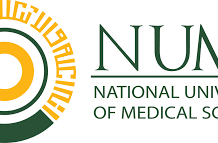مضمون کا ماخذ : نتیجہ بہت زیادہ
متعلقہ مضامین
-
US House introduces bill to sanction Pakistani officials
-
Lahore named ECO’s tourism capital for 2027
-
Mayor, Town Chairman meets DC, discuss load shedding issue
-
Miracle Feat کا سرکاری تفریحی لنک
-
Pakhtunkhwa ready to start work on Chasma Lift Canal
-
Pakistani entrepreneur Dr Shahid Mahmud honoured in US
-
Hoti blasts PTI government for shelving development plans
-
Foreign funding corruption case against PTI is fake: Naeem ul Haq
-
Money Tree Entertainment سرکاری لنکس
-
الیکٹرانک پی پی آفیشل گیم پلیٹ فارم ویب سائٹ کی خصوصیات اور فوائد
-
HB الیکٹرانک انٹرٹینمنٹ ٹرسٹڈ اے پی پی: ڈیجیٹل تفریح کا جدید پلیٹ فارم
-
GW لاٹری ایماندار بیٹنگ انٹری کی منفرد سروس










